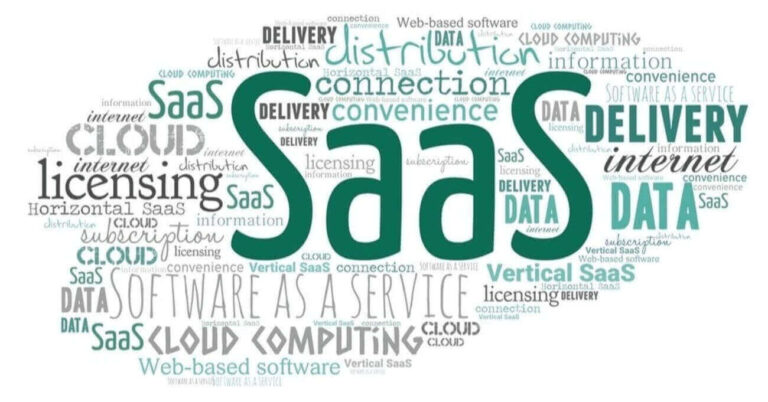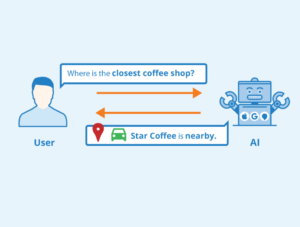5 главных проблем SaaS-компаний

Концепция онлайн-инструментов для работы никогда не была более привлекательной для работодателей, особенно в цифровую эпоху после COVID. Пережив бум удаленной работы, вебинаров и онлайн-совещаний в 2020 году, все больше и больше компаний с готовностью используют облачные решения в качестве альтернативы традиционным рабочим системам. Это приводит к почти навязчивой глобальной тяге к возможностям удаленного сотрудничества и облачных вычислений.
В этой статье вы узнаете все о Программное обеспечение как услуга и как это приносит пользу корпоративным пользователям, включая особые проблемы, с которыми сталкиваются компании SaaS.
Что такое SaaS-компания?
Компания, предлагающая программное обеспечение как услугу, также известная как (SaaS), является сторонним поставщиком программного обеспечения, который предлагает пользователям удаленный доступ к облачному программному обеспечению. Проще говоря, служба коммерциализирует онлайн-программное обеспечение для клиентов, при этом они не обязательно владеют приложением или устанавливают его.
Как работает SaaS-компания?
Программное обеспечение как услуга компании размещают онлайн-приложения, за доступ к которым компании платят ежегодную абонентскую плату. Поставщик услуг буквально снимает с клиентов головную боль по установке и регулярному обновлению программного обеспечения; предоставляя веб-программное обеспечение, размещенное на их больших серверах. Это прямая регенерация обычного упакованного программного обеспечения.
Преимущества SaaS
- Гибкость и мобильность программного обеспечения: Представьте себе, что вы ходите с данными вашей компании буквально на кончиках ваших пальцев. Это одно из важных преимуществ облачных программных служб. Хостинг онлайн-приложений делает данные легко доступными для пользователя с любого устройства в любое время, тем самым экономя время.
Переход на программное обеспечение по запросу изменил традиционные системы управления данными, используемые предприятиями, экономит логистику технической инфраструктуры компании и снижает затраты на настройку приложений. - Возможность автоматизации SaaS способствует росту рынка: по статистике, 38% компаний во всем мире почти полностью работают на SaaS, и по крайней мере 85% планируют перейти на облачное программное обеспечение к 2025 году. Причина в том, что общий эффект от использования онлайн-программного обеспечения ускоряет бизнес. производительность и эффективность более чем вдвое.
- Масштабируемая бизнес-модель: Рынок облачного программного обеспечения быстро развивается: по прогнозам, к концу 176.62 года его стоимость на мировом рынке достигнет 2022 млрд долларов, а ежегодные темпы роста составят 18%.
В результате все больше и больше компаний погружаются в космос. Одна из причин, по которой онлайн-сервис программного обеспечения продолжает процветать, заключается в их масштабируемой бизнес-модели. Благодаря таким громким именам, как Salesforce и Microsoft, годовой доход которых составляет миллиарды долларов, а также таким единорогам, как Lucid, стоимость которых оценивается в 3 миллиарда долларов, бизнес программного обеспечения никогда не был более прибыльным. - Избавляет пользователей от необходимости обслуживания ИТ-инфраструктуры: Подписавшись на программное обеспечение по запросу, компаниям больше не нужно тратить огромную часть своих текущих расходов на обновления программного обеспечения, установку или регулярное исправление ошибок.
Проблемы SaaS-компаний
За последние несколько лет индустрия программного обеспечения как услуги во всем мире продемонстрировала значительный рост с точки зрения технологического прогресса и валовых доходов. Кроме того, размер рынка вырос, чтобы вместить как физические продукты, так и удаленные сервисные компании.
Тем не менее, этот быстрый рост не обходится без нескольких заминок. Вот некоторые из проблем, с которыми сталкиваются компании в сфере облачных вычислений и программного обеспечения как услуги.
1. Проблемы с бизнесом и моделью продаж
Одной из проблем для SaaS-компаний является заставить пользователей платить за коммерческие продукты. На основе модели freemium клиенты могут пользоваться бесплатными версиями продукта в течение ограниченного времени или с ограниченными функциями.
Однако тенденция в настоящее время такова, что клиенты не хотят подписываться на использование монетизированных версий. Это сильно мешает доходной модели бизнеса. Основным источником дохода является абонентская плата, уплачиваемая клиентами.
Постепенно поставщики программного обеспечения (около 38% SaaS-компаний) переходят на ценообразование на основе использования вместо услуг на основе подписки. Это означает, что клиентам выставляется счет за объем использования и только тогда, когда они используют услугу.
Преобразование бесплатных пользователей в платных подписчиков было реализовано с помощью модели ценообразования на основе пользователей, которая взимает плату с компаний в зависимости от количества пользователей программного обеспечения. Хотя бизнес-модель удаленных компаний-разработчиков программного обеспечения все еще находится в стадии разработки, она развивается, чтобы привлекать клиентов и поддерживать прибыльность.
2. Высокая стоимость разработки продукта и обслуживания инфраструктуры.
Разработка инфраструктуры, необходимой для размещения серверов, особенно при постоянном учете новых технологических тенденций, обходится дорого. Процесс обновления и модернизации систем управления довольно обременительный.
Хотя хостинговая компания может отказаться от регулярных обновлений, последствием является риск серьезной атаки, которая приведет к потере данных, хранящихся в ее системах.
3. Кибератаки и неквалифицированные работники могут привести к массовой потере данных
Еще одна серьезная проблема для SaaS-компаний — последствия кибератак, которые могут вывести из строя поставщика услуг. Из-за большого объема хранимых данных, которые могут попасть не в те руки, это может помешать росту их рынка.
Кроме того, последствия сбоев систем данных многомерны. Учитывая их зависимость от стороннего хостинга программного обеспечения, компании-пользователи могут серьезно пострадать в случае сбоя системы или кибератаки на системы поставщиков программного обеспечения.
4. Слишком сильная рыночная конкуренция
Сектор SaaS быстро вырос и стал доминировать на рынке программного обеспечения и облачных вычислений. Это привело к повышению спроса на ее продукты и большому венчурному финансированию SaaS-компаний. Поэтому неудивительно, что отрасль сейчас перенасыщена компаниями, пытающимися воспользоваться этой новой возможностью.
Даже традиционные поставщики пакетного программного обеспечения теперь переименовываются в «онлайн-поставщиков программного обеспечения». Подразумевается, что теперь сложно поддерживать постоянство клиентов после стольких затрат на успешную адаптацию клиентских компаний.
5. Высокая скорость оттока
Уровень оттока — это количество пользователей, которые перестали использовать определенный продукт в пользу другого в течение определенного периода времени. Клиенты уходят с корабля по одной из многих причин, таких как цена, плохая маркетинговая стратегия, гибкость продукта, гибкость и удобство для пользователя.
Решение состоит в том, чтобы продемонстрировать, насколько важен ваш продукт, помогающий пользователю в его бизнесе, вместо того, чтобы пытаться продать больше или заставить его купить больше. Продолжайте указывать на успехи, которых они добились, подписавшись на ваш продукт, вместо того, чтобы активизировать маркетинговые усилия.
Существуют и другие проблемы, начиная от найма подходящей рабочей силы и привлечения маркетологов к «продаже» продуктов на сжатом рынке до выбора правильного рынка и осуществления продаж, достаточных для покрытия затрат с прибылью.
Ведущие поставщики программного обеспечения как услуги
К крупным игрокам в этой отрасли относятся:
- Microsoft
- Salesforce
- Adobe Creative Cloud
- Рабочая область Google
- CISCO
- Постигать интуитивно
- Github
- Веб-сервисы Amazon
- Databricks
- ServiceNow
- Hubspot
- Коробка
- Mailchimp
Что сейчас в тренде в индустрии программного обеспечения как услуги?
- Функция интеграции данных: Несмотря на все проблемы в отрасли, все еще есть зарегистрированные прорывы, такие как функция интеграции данных. Первоначально компаниям было трудно мигрировать и интегрировать свои данные в облачное программное обеспечение, но недавние улучшения в сервисе включают беспрепятственный процесс интеграции данных для компаний, что устраняет необходимость влияния третьих сторон.
- Вертикальное SaaS: В отличие от горизонтального SaaS, обычно используемого компаниями, технологические компании могут использовать вертикальную настраиваемую модель SaaS для конкретных отраслей. С помощью вертикального SaaS компании могут создавать и адаптироваться к целевым потребностям потребителей и нишам отдельных продуктов.
- Технология искусственного интеллекта (ИИ): Технология искусственного интеллекта позволяет автоматизировать и персонализировать обслуживание, включая скорость и безопасность систем данных и адаптацию данных.
Стоит отметить, что технология искусственного интеллекта сейчас вызывает много шума на рынке, поскольку она нарушает деятельность во всех секторах технологической индустрии. В сочетании с инфраструктурой SaaS искусственный интеллект помогает повысить эффективность автоматизированных сервисов, что помогает клиентам адаптироваться к сервису, а также повышает удобство использования продуктов SaaS.
Заключительные слова
Программное обеспечение как услуга — это больше, чем просто модное слово, используемое в технических областях. По сути, это одна из самых прибыльных ниш в технологической индустрии как с точки зрения доходов, так и с точки зрения использования. Возможности безграничны, компании не могут обойтись без использования той или иной формы продукта SaaS, что делает его очень востребованным.





